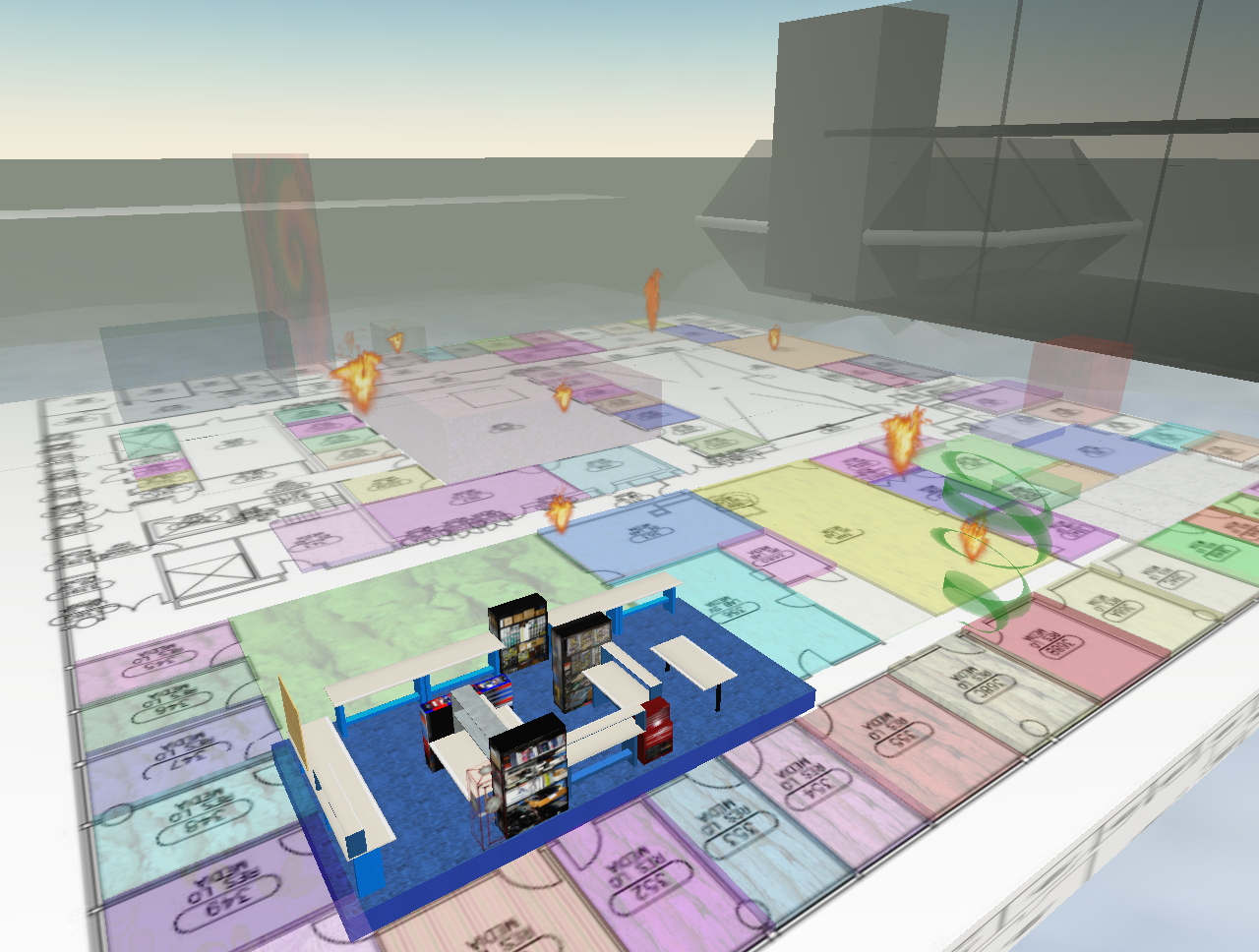Dual Reality Lab

"Dual reality" is the concept of maintaining two worlds, one virtual and one real, that reflect, influence, and merge into each other by means of deeply embedded sensor/actuator networks. Both the real and virtual components of a dual reality are complete unto themselves, but are enriched by their mutual interaction. The dual reality Media Lab is an example of such a dual reality, as enabled the Plug sensor/actuator network that links our actual lab space to a virtual lab space in the Second Life online virtual world.
MEDIA
[MOV] A brief tour of the final Shadow Lab. Each "Pond" is drawn on a Media Lab third-floor map at the point where a PLUG node is located (the Responsive Environments Lab is rendered in more detail). The metaphor shown in this video animates (at each node) orange smoke in proportion to the net current drawn from the PLUG outlets, the amount of wave in the fronds indicating the amount of motion detected around the PLUG node, the "ripples" around the pond corresponding with the local audio amplitude, the height of the fronds corresponding to the local amount of light, and the color of the fronds mapped to the local temperature.
[MOV] An older version of Shadow Lab as it was being developed, with the visualizations not strictly localized. Columns of fire denote the amount of current used from the corresponding PLUG, whirlwinds denote sensed motion, the height of room dividers denotes local activity levels there, and "ghost" faces denote the ID and location of individuals with a wearable transmitter. Again, the ResEnv Lab is rendered in more detail than the surrounding floor.
[FLASH] A very early working version of Shadow Labfrom 2006, before we moved to Second Life (this version is in Adobe Flash, and shows simple iconic representations of the sensor data on a flat map - a process that evolved further in our Tricorder project). This version of the Flash animation [FLASH] shows also link data as sensor packets are routed wirelessly through the PLUG network.
[AVI] Here, we show a "tentacle fan" - a physical version of the waving tentacles in the last version of Shadow Lab for installation in the real world. Here, the intensity of the fan is adjusted by controlling the output voltage of the PLUG, allowing virtual activity to produce a physical artifact in the real world. On the order of a dozen of these devices were built and used for various installations.
[AVI] This video shows the hair on Josh's avatar morphing with the level of activity in his office area - mapping sensor data onto avatars rather than architectural features can reflect contextual or local information relating to the avatar's user.
PUBLICATIONS
Josh Lifton's PhD thesis work has been summarized in our July 2009 FAVE paper:
J. Lifton and J.A. Paradiso, “Dual Reality—Merging the Real and Virtual,” to appear in the Proc. of the 1st Int’l Conf. Facets of Virtual Environments (FAVE 09), Berlin Germany, 27–29 July 2009, Springer LNICST.
The most encompassing publication on this work thusfar is Josh Lifton's Phd Thesis (August 2007).
[PDF] Slides for a talk given at the MIT Media Lab's Spring 2007 Things That Think (TTT) consortium meeting Dual Reality break out dinner session on 10 May 2007. This talk is a refined version of a talk originally given on 2 February 2007 at a DARPA ISAT meeting, again at the Samsung SISA lab on 29 March 2007, and for a third time at the IPSN SPOTS conference on 26 April 2007.
LINKS
This work evolved (circa 2008) into our "Cross Reality" Initiative, seeded by our Ubiquitous Media Portals. Link here for more details.
The current (e.g., post 2011) versions of this work have adopted game engines instead of Second Life, resulting in our DoppelLab and Tidmarsh projects.